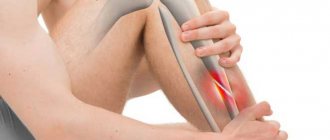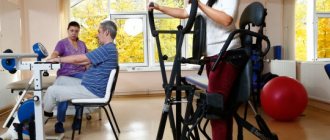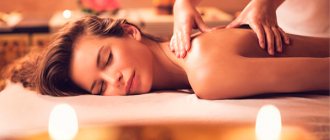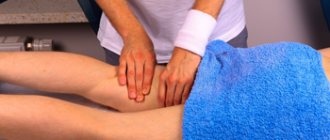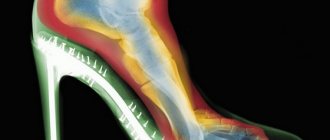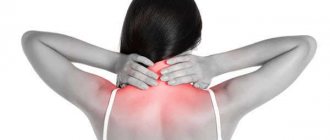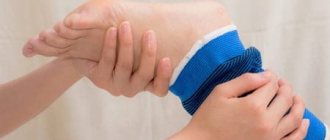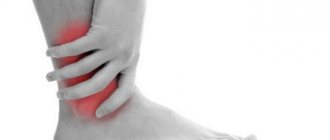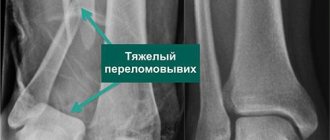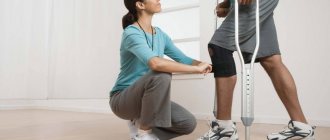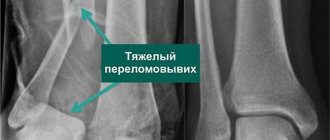- Which ankle ligaments are torn?
- What to do if you have a sprained ligament?
- How to massage the knee ligaments?
- Do you need diagnostics?
- The effectiveness of massage
- Massage for old injuries
- Massage after ankle ligament rupture
- Massage for knee sprains
Many different methods are used to restore damaged ankle ligaments. These are surgical operations, cell therapy, limb immobilization. The process of rehabilitation after injury or surgery plays a vital role. To restore a patient after a ruptured ankle ligament, massage is used along with physical therapy and physiotherapeutic measures.
Which ankle ligaments are torn?
As a result of an ankle injury, the following ligaments can tear:
- distal tibiofibular syndesmosis;
- external;
- deltoid.
The lateral ligament is most often affected - two thirds of all cases. They are injured as a result of excessive inward rotation of the tibia combined with plantar flexion. The anterior tibiofibular ligament is most susceptible to injury. The rupture can vary in severity:
massage
massage
1st degree. Only a small portion of the fibers are torn. In everyday life, this type of injury is called a sprain. Massage for ankle sprains can be used as one of the main treatment methods, since surgical intervention is not required in such situations.
2nd degree. Most of the fibers are torn. However, the gap remains incomplete. The ligament retains its function.
3rd degree. A complete rupture of the ligament occurs. The function of the ankle joint is severely impaired.
Massage technique
Technique for performing therapeutic massage
The preparatory stage of the procedure includes several massage movements performed in a certain sequence. Each movement must be repeated 4 to 6 times.
- stroking - performed with a relaxed palm, easily sliding over the massaged surface. In this case, the thumb is moved to the side as much as possible;
- squeezing - done with the edge of the palm, which is placed across the shin. For uniform pressure, the fingers must be bent;
- pincer-like rubbing - carried out with four fingers, gradually moving along the massaged area. The thumb is placed on the opposite side;
- spiral rubbing - light rotational movements, performed with the pads of four fingers;
- kneading – involves light pressure with your fingertips on the muscle being massaged. During movement, the muscle moves slightly to the side;
- deep kneading - performed with the phalanges of four fingers. The brush gradually moves forward, carefully working the massaged area.
In this way, a preparatory massage is performed for sprained or torn ankle ligaments. After this, you should move to the affected area. The injured area is treated as follows:
- circular stroking is performed 4-5 times;
- forceps-like rubbing is performed 6-7 times, movements are made from top to bottom;
- rubbing with fingertips is carried out 5-6 times in the area of the Achilles tendon;
- stroking 6-7 times;
- rubbing with fingertips 3-4 times;
- final stroking 5-6 times.
During the procedure, the focus is on the most accessible areas of the joint. The area under the ankle and on both sides of the Achilles tendon is carefully treated. If severe pain occurs, the session must be stopped.
What to do if you have a sprained ligament?
If the ligaments are not completely torn, then conservative measures are sufficient for recovery. Most often there is a slight stretching. It manifests itself as pain and swelling of the joint. To restore you need to do the following:
1. Apply cold to the damaged area. It is useful in the first days after injury, and especially in the first hours, as it helps reduce swelling and pain.
2. Walk. You need to spare your sore leg. Peak loads should not be given. But minimal loads are necessary for full recovery. Light loads improve blood circulation and ensure the outflow of lymph and venous blood. This not only reduces pain and ensures complete tissue regeneration, but also reduces the amount of inflammatory mediators in the lesion.
3. Get an ankle massage after a sprain. It's better to have it done by a professional. If this is not possible, do it yourself or ask relatives. A bad massage is still better than no massage.
Rules for performing massage
You can begin therapeutic massage sessions no earlier than three days after the injury. Rushing can cause bleeding and make the situation worse.
The recommended duration of the first session is 7-10 minutes, gradually the procedure time increases to 15 minutes. During the procedure, warming and therapeutic agents can be used to reduce discomfort, as well as massage oil.
A therapeutic massage session for damaged ligaments consists of two stages, the order of which must be observed. At the first stage, which is called preparatory, the lower leg area is worked out. It is important to consider that the impact begins on the area located above the injured area.
After the preparatory stage, the main massage is carried out, directly affecting the damaged area.
During the session, the muscles and ligaments of the affected limb should be relaxed. The leg must be placed comfortably, for which special bolsters are used. All movements are made easily and smoothly, while the technique of ankle massage after a fracture, rupture or sprain will differ. The victim should not experience severe pain, especially if the patient is a child.
knee ligament massage
massage of the knee joint ligaments
The person takes a sitting position. The leg is extended, lying on a hill. For example, the patient may sit on a chair or sofa with his foot placed on a low stool. Another option: lying down, with a cushion placed under the knee.
The masseur kneads the ankle joint. It moves along the front surface of the foot and the distal part of the lower leg. This technique is called rubbing. In this case, the injured area should be avoided. Direct pressure should not be applied to it, as this will lead to pain.
If a person gives himself a massage on his own, identifying the problem area for him will not be difficult. What makes it different is that it hurts. If the massage is being performed on another person, you should not only be guided by the patient’s sensations and ask about them, but also pay attention to the appearance of the ankle joint. In areas of damaged ligaments, a hematoma can often be seen. If it is not present, swelling is almost always present.
When performing stroking:
- The massage therapist keeps the hand relaxed;
- his four fingers are closed, and his thumb is retracted to the maximum;
- The massaged areas are covered by the palm as widely as possible.
After three minutes, they begin a more active massage effect. However, it should not be excessive. If the patient complains of pain, it is worth paying attention to both the force of impact and the area of application of this force. Basic techniques used by a massage therapist:
Squeezing with the edge of the palm. The brush is placed edge-on on the area of skin to be massaged. The fingers are in a relaxed and half-bent state. The brush is placed across the limb. Squeezing is done with effort, but the movements are slow.
Rubbing with forceps. Four fingers are placed on the massaged area. They are collected in a bun. The big toe is on the other side of the leg. The massage therapist rubs the massaged area with his fingertips.
Kneading with fingertips. The same as with “tongs”. Only the finger does not rest on the leg. Four fingers gathered in a bun make circular movements. They put pressure on the muscle, shifting it to the side while performing movements.
Kneading with phalanges of fingers. The masseur's hand is clenched into a fist. The doctor massages the muscle, pressing it against the bone. Gradually he moves. The thumb is used as a fulcrum relative to which translational movement is carried out. It helps to fix the brush.
Then they stroke again. It completes any massage session.
The procedure can be done after pre-cooling the problem area. The massage is performed twice a day. In the first days after injury, the duration of the session does not exceed 4-7 minutes. Later it is increased to 10-12 minutes.
Massage for sports injuries
Home Medical encyclopedia Encyclopedia of massage Sports massage
Massage is one of the components of the comprehensive treatment of sports injuries. It plays a major role during the rehabilitation of athletes’ performance after they have suffered injuries of various types.
The most common injuries are various bruises, sprains, dislocations and damage to muscles and tendons.
Massage performed for sports injuries and other injuries has the following effects:
— being a skin irritant, it contributes to the occurrence of active skin hyperemia;
- activates muscle contractions;
- sharply reduces the sensitivity of peripheral nerves, at the same time the general soreness of the area that is injured;
— favors an active flow of blood to the massaged area, while stimulating metabolic processes in it;
- prevents the onset of atrophy, and if it does occur, it helps to eliminate it;
— promotes the rapid formation of bone callus;
- effectively acts on the resorption of effusions, swelling, hemorrhages and infiltrates;
— strengthens muscles and improves tissue trophism.
The techniques that are used when performing massage for sports injuries are the same as for general massage: squeezing, rubbing, stroking, kneading and others. The choice of techniques depends on the configuration of the muscles, the nature and location of the injury, etc.
Rubbing and ointments also contribute to faster restoration of the functions of joints and ligaments in case of various injuries: for diseases of the muscles and peripheral nervous system - myalgin, myositis; for sprains and bruises - vip-ratox, amizartron. All of the drugs listed are used only after consultation with a doctor.
One common type of sports injury is bruises. Bruises are damage to tissues and organs that do not affect the integrity of the skin and bones. With bruises, swelling, hematomas, ruptures of blood vessels, muscle tissue and nerves are observed.
Along with other means, massage is the main remedy for bruises. Its effect is great: pain goes away much faster, swelling disappears, muscles are strengthened, their functions become the same.
If a soft tissue injury occurs, in which there is no rupture of large vessels, massage should be done on the 1-2nd day after injury. Carrying out massage at an earlier stage has a more effective effect on injured tissues and restores their functions faster.
Immediately before performing the massage, you should try to achieve the greatest relaxation of the muscles or ligaments in the area of the area that is damaged. The position of the person being massaged should be such that the whole body is in a relaxed position.
Massage, which is performed for injuries to the musculoskeletal system, is divided into two stages: preparatory and main.
Preparatory massage is carried out on uninjured parts. It is performed over several sessions (3-5), it all depends on the type of injury and pain experienced by the athlete. Some time after the injury, the first massage session is scheduled. It includes a set of different techniques: stroking, squeezing, kneading and shaking.
The massage should begin with light stroking, which should be performed on the area slightly above the injury. After gradual adaptation of the injured person, you can begin stroking and squeezing more intensely without causing pain. After repeating the squeezing 2-3 times, combined stroking is performed again, then a small kneading, which captures most of the tissue.
If the injury occurs in an area that consists of large muscles, a kneading technique, double circular and long, is used. When performing a massage, kneading techniques should alternate with stroking and shaking techniques.
Massage is done 2-3 times a day. The session lasts 5-7 minutes. For the first massage sessions, the time for its techniques is distributed as follows: for kneading and stroking - 2-3 minutes, and for shaking - 1 minute.
By performing a massage using this technique, you can achieve a reduction in swelling in the area of injury and normalization of the function of the injured area.
After 2-3 days, after three to five sessions of preparatory massage, you can begin the main one.
The main massage is performed on the injured area. This massage is started only if the athlete does not experience pain in the area of the bruise, tissue swelling and high temperature.
The massage begins with stroking, squeezing and kneading the areas above the injury area, after which the injury area is massaged. In this case, light combined stroking and rubbing is used. At the moment of stroking, pressure of varying strength is applied: the further from the injured area the pressure is applied, the stronger.
If severe pain is not observed, you need to start using straight-line rubbing with your fingertips from the very first day, doing it with low intensity, alternating with concentric stroking (on the joints). When the pain becomes insignificant, you need to start using spiral and circular rubbing with your fingertips.
The main massage can be carried out using therapeutic and warming agents that have a beneficial effect, as a result the recovery period is significantly reduced. It is also important that massage is carried out with the aim of restoring the functions of the injured area, so it must be combined with physical exercise and thermal treatments (before the massage session).
Massage technique for sprained joints (distortion)
Among other sports injuries, damage to joint ligaments is common. It is associated with strong tension in a certain area of the fibrous capsule of the joint and the ligaments that strengthen it. The most common sprains occur in the trochlear joints, mainly the ankle, wrist, elbow, knee and finger joints. Often, during a sprain of the ligamentous apparatus of a joint, simultaneous damage to its synovial membrane, tendons, and in some cases joints and nerves occurs.
The main symptoms of a sprain are pain and swelling in the joint, as well as limited movement in it. It is impossible to fully work with the injured limb, for example, to step on a leg.
For injuries such as sprains, the doctor prescribes thermal procedures, which are carried out on the second day. Thermal treatments include warming compresses, baths, paraffin and massage. When working on joints, the massage therapist must take into account the patient’s condition and perform techniques with such force that the person being massaged does not experience pain.
When performing a joint massage, you need to remember the places where the muscles attach to the tendons and pay attention to them.
Shoulder joint. Impact on the shoulder joint should begin with the muscles of the shoulder girdle (upper trapezius muscle and neck muscles). First, you need to use stroking and kneading (single, double ring), and after two to three minutes, move on to concentric stroking of the shoulder joint and kneading the shoulder. Massage should be carried out for 5-7 minutes 2 times a day.
If there is no acute pain, then you can begin direct impact on the joint. First, a massage is performed on the anterior, posterior and lower walls of the joint capsule. To make it more convenient to work, the patient is recommended to place the injured arm (as far as possible) behind his back. Standing behind the patient, the massage therapist simultaneously works on the right and left joints: with his right hand on the right joint, with his left hand on the left. Along with this, various rubbings are used: straight with the pads of four fingers, circular with the pads of four fingers, the base of the palm and the phalanges of the fingers bent into a fist. Rubbing must be used in combination with stroking and kneading.
Massage of the back surface of the joint should be carried out using the same technique as massage of the front surface; The difference is that when providing the effect, the massage therapist must be in front of the patient, and the patient must take a position in which the hand of the affected arm should grasp the elbow joint of the healthy arm.
Massage of the shoulder joint can also be performed in a position where the forearm of the sore arm is on the table. This position makes it possible to relax the shoulder muscles and get deeper into the joint capsule. First of all, you should perform concentric stroking, and then straight and circular rubbing around the joint.
At the end of each massage session, several movements should be made in the joint. To do this, the massage therapist must fix the outer edge of the scapula with one hand, and with the other, holding the distal part of the limb, perform movements in all directions, increasing the amplitude over and over again.
Knee-joint. When ligament damage is observed, effusion accumulates in the joint capsule, which then deforms its anterior wall and displaces the patella upward. Massaging should begin from the front of the thigh. After performing a two to three minute preparatory massage, which includes stroking, squeezing, and kneading techniques, you can move on to concentric stroking of the knee joint (to give it an optimal physiological position, you need to place a pillow under the joint). After this, it is recommended to carry out straight-line and circular rubbing with the pads of four fingers and the base of the palm, lasting 2-3 minutes. Particular attention should be paid to the lateral areas of the joint. The patient is recommended to bend his leg at the knee, after which he should continue rubbing the lateral areas with the pads of his thumbs. Rubbing should be done in different directions. Over time, the intensity of the massage should increase.
If you need to massage the back surface of the knee joint, the patient should take a lying position on his stomach and bend his leg at the knee at an angle of 45-75 degrees. Massage should be carried out in the same way as on a healthy joint, taking into account only the patient’s level of pain. Massaging the knee joint should be completed with alternating passive, active and resistance movements (sometimes alternating with rubbing).
Ankle joint. Before starting a massage of this area, you need to place a cushion or pillow under the sore leg, and then begin a preparatory massage in the direction from the ankle to the knee (2-3 minutes). In this case, you should use a combination of stroking and squeezing.
Then, with the hands of both hands, you need to stroke in the direction from the foot to the middle of the lower leg, applying pressure of varying strength in different areas. Most often, more force is applied to the foot, and as you move away from the joint, stroking is replaced by squeezing. Having finished performing straight-line stroking and squeezing, you should gradually move on to concentric stroking on the joint and light rubbing. Attention should be concentrated on the places where the ankle joint is most accessible: under the ankles and on both sides of the Achilles tendon.
After this, the massage therapist should apply pressure to the Achilles tendon with the pads of four fingers, using straight and circular rubbing. Then you need to perform circular rubbing with the pads of all fingers of both hands, which should be located on both sides in relation to the Achilles tendon, and finally massage the lower leg. Using circular rubbing, you can penetrate into the depths of the joint, even into those areas where the tendons are located above the joint. Circular rubbing should be used in combination with vigorous concentric stroking and passive flexion and extension of the foot. After the pain gradually passes, you can increase the duration of the session.
Massage technique for dislocations
Dislocation is a persistent displacement of the ends of bones beyond the boundaries of their normal mobility, often accompanied by hemorrhage. Its consequence is stretching or rupture of the joint capsule and ligaments. The most common dislocations are of the upper limb, in particular the shoulder joint. With traumatic dislocations, the patient feels acute pain, especially at first.
You should proceed to massage only after the dislocation has been reduced and a therapeutic method has been applied to immobilize the part of the body where the dislocation is found. The massage technique for sprains is the same as for sprains.
Massage technique for fractures
A fracture is a violation of the integrity of a bone. A traumatic fracture occurs when a bone is subjected to some kind of mechanical force. When a case of a complete fracture occurs, a displacement of bone fragments in relation to each other is observed. In the case of an incomplete fracture (partial), bone damage is not observed throughout its entire diameter. The fracture in which there is a violation of the skin or mucous membrane is called open, and the one in which there is no violation is called closed.
Callus can take a long time to form; the exact period of its formation cannot be determined, because it depends on the age and body of the person who received the fracture. And also on how correctly the fragments were combined.
When using massage to treat fractures, blood and lymph circulation is greatly improved, muscle elasticity is activated and limb functions are normalized. In cases of closed fractures, massage is prescribed on the 2-3rd day after injury. Massaging helps to soothe the pain, promotes the resorption of the hematoma in the fracture area, as well as the rapid formation of callus.
Massaging the injured area is possible by applying a plaster cast to it. When the plaster cast has already been applied, a preparatory massage and massage of the healthy limb should be carried out, while remembering its reflex action.
During the first days after suffering an injury, massage must be carried out according to a technique whose main goal is to reduce increased muscle tone; in this case, stroking is used - It is performed not only over the area of damage, but also on other parts of the body. In parallel with stroking, light shaking is performed.
If the tibia is fractured, a plaster cast should be applied from the top of the foot to the bottom of the thigh.
Massaging is performed on the open area of the foot. Stroking is used, mostly combined. It is also performed on the open part of the thigh, on its inner, middle and outer areas. At first, the massage should be performed for 3-4 minutes, then the massage should be carried out on other limbs.
Massaging a healthy limb should also begin with light stroking, and then move on to squeezing, which should be combined with stroking and shaking. Single, double ring and long kneading should be used.
The massage therapist should perform Finnish shaking by placing the patient's healthy limb on his thigh, while simultaneously stroking and shaking. The duration of the thigh massage is 3-4 minutes. The same effect should be carried out on the lower legs and chest, reducing the time to 1-2 minutes. The massage lasts 6-9 minutes, but the time may vary depending on the patient’s well-being and other reasons.
In cases where an open fracture is obtained, massage is strictly contraindicated. It is also contraindicated for complicated local and general infections.
Massage technique for damaged fascia and muscles
When a muscle ruptures, a sharp pain is felt, and a swelling appears at the site of the injury. Active muscle contraction becomes impossible.
These types of injuries are usually the result of a blow to the skin with a blunt object while the muscle is strongly contracted, or the result of a sudden strong contraction of the muscles. In track and field athletes and football players, this injury is most often observed in the area of the biceps femoris muscle, in gymnasts - in the upper third of the biceps brachii muscle, in skiers - in the upper part of the adductor muscles of the thigh, etc.
When the fascia is torn and a muscle is bruised, a massage is performed similar to that done when a muscle is stretched: squeezing and kneading alternate with stroking. If there is no pain at the site of injury, then light stroking of the bruised muscle can be applied.
Massage for this type of injury is carried out the next day after the injury and with the permission of the doctor. Massage is done 2 times a day for 5-7 minutes. Solux can be used at the same time. In subsequent sessions - dry air baths. The massage time should gradually increase, and active-passive movements should be added to the techniques.
An unqualified combination of massage and physiotherapeutic procedures can lead to myositis ossificans (inflammation of skeletal muscles).
Massage technique for myalgia
Improper activity of the musculoskeletal system: excessive muscle tension or, conversely, their low mobility, as well as cooling (prolonged stay in a damp room, water, etc.) are the causes of myalgia.
Before the massage, the person being massaged should take thermal procedures: bath, steam or dry air bath. After each vigorously performed technique, light relaxing and pain-relieving techniques should be done (combined stroking, shaking).
The massage procedure is as follows:
1. The massage should begin with techniques such as light stroking and shaking (large muscles - gluteal, calf, etc.).
2. Then you should move on to rubbing: straight and circular. First with the pads of the thumbs, then with the pads of the four fingers, then with the phalanges of the bent fingers and, finally, with the base of the palm. Rubbing should be alternated with pressure.
3. This should be followed by deep kneading: regular, double bar, double ring, long, tong-shaped, etc.
4. 3-5 minutes before the end of the session, the following rub should be applied to the sore spot, without rubbing: dolpic, apizarthron, finalgon (in case of severe pain, the rub can be rubbed around the sore spot) - and massage the areas above or below it.
5. After 2-3 minutes, you need to perform a deep (but careful!) massage of the sore spot.
6. After the massage, a dry bandage or compress should be applied to the sore spot (to preserve heat).
Massage technique for myositis
The causes of myositis can be colds, traumatic and infectious. This disease is characterized by soreness, hardness and swelling of a certain area of the muscles. The pain intensifies when trying to contract the muscles. Myositis can be acute or chronic.
Massage and thermal procedures are a set of measures that significantly speed up the healing process. Massage has a particularly beneficial effect if performed with rubbings - dolnik, apizarthron, etc.
Massage should be performed regularly 2 times a day. The duration of the session in each individual case should be different (from 5 to 15 minutes or more). The technique of massage for myositis is the same as for myalgia.
| print version | This information is not a guide to self-treatment. A doctor's consultation is required. |
leg
leg
- the ligament is partially torn or completely torn;
- are there any concomitant inflammatory changes in adjacent ligaments;
- are there any intra-articular bone fractures?
Based on the results of the examination, the doctor will make a conclusion about the preferred method of treatment. You may need surgery or immobilization of the limb in a cast. In such a situation, the problem cannot be solved with massage alone. Although it can be used later - during the rehabilitation period.
Water massage
Water foot massage
The problem area is treated not with the hands of a massage therapist, but with jets of water. In this case, the flow strength is adjusted individually. Water pressure, adjusted in a certain way, helps restore motor function of the joint and increase its mobility.
The mechanical action of water flows improves blood circulation in the affected area, eliminates pain and speeds up recovery. Water massage of the ankle is prescribed for arthrosis, as well as after operations, dislocations, ruptures and sprains.
The doctor determines how many sessions are needed and sets their duration. Hydromassage is carried out by qualified specialists using certified devices. Videos demonstrating the operation of modern devices show their convenience and versatility. This type of therapy can be prescribed even to a schoolchild. The procedure will have to be abandoned only in case of exacerbation of chronic pathologies, in the presence of inflammatory processes or skin diseases. A course of therapeutic massage can include from 10 to 15 procedures that help quickly restore an injured lower leg.
During the rehabilitation period, various techniques and methods are used. In simple cases, a classic massage performed by a professional helps the patient recover.
In difficult situations, the patient may be prescribed a water massage of the ankle for stretching with the addition of oleic acid.
The decision is made only by the doctor, and all manipulations are carried out exclusively under the supervision of a specialist.
The effectiveness of massage
Massage is good because it provides good results for almost any injury or illness. It is used for ligament ruptures, dislocations, ankle fractures (at the recovery stage), bruises and any other conditions. If the impact is on the knee or ankle, the person does not even have to resort to the help of strangers. He can do self-massage, and if he has sufficient skills and abilities, such an effect will be effective.
But the role of massage in the treatment and recovery of the patient should not be overestimated either. This procedure will not help:
- heal completely torn ligaments if they require surgical reconstruction;
- straighten dislocations;
- force the broken bones to take the correct position for full fusion;
- restore limb function after chronic ligamentous injuries.
You should not expect outstanding results from massage. This is one of the options for symptomatic therapy if it is used during the acute period of injury, as well as one of many effective methods of recovery during the rehabilitation period (including after surgery or removal of a plaster cast).
The main effects that can be obtained from massage:
massage
massage
- improvement of microcirculation;
- normalization of tissue trophism, which can accelerate regenerative processes;
- outflow of lymph and venous blood - relieves swelling;
- reducing the amount of inflammatory mediators in the damaged area alleviates most symptoms;
- muscle tone is normalized;
- with prolonged use, joint function is restored faster.
In this case, massage does not affect the outcome of the injury. Minor injuries, in which the patient self-heals, go away on their own, regardless of whether you massage the muscles or not. If there is serious damage to intra-articular structures, then massage alone will not solve the problem. Additional treatment methods are required, including surgery.
Massage for old injuries
Up to 50% of patients who have sustained ankle injuries do not see a doctor or do not receive adequate treatment after seeking treatment. This is associated with a high rate of unsatisfactory outcomes. Residual effects are observed in 30% of patients in the long-term period after ankle injury. In particular, this may be chronic ankle instability.
For old injuries, massage alone is unlikely to be enough. If joint instability has developed, in some situations it can be treated in the first two months using external fixation devices. For older injuries, surgery must be resorted to. All of them are divided into 3 groups:
Massage
Massage
- plastic surgery of the torn ligament with local tissues;
- its restoration with allografts (preserved donor tissues);
- plastic with synthetic prostheses.
If a lot of time has passed since the injury, but your leg hurts, swells, or twists under stress, you should see a doctor. There may be a complete ligament tear that has not been diagnosed and treated. If diagnostics show that recovery can be carried out using conservative methods, massage is used along with other procedures: physical therapy, physiotherapy, ozone therapy and other methods to relieve pain and improve blood circulation.
Massage after ankle ligament rupture
Severe ankle injuries require surgery or prolonged immobilization in a cast. Massage is not used during the acute period. But it is used during the recovery period to speed up the patient’s rehabilitation and reduce symptoms.
Various operations are performed, depending on the characteristics of the injury. After some, immobilization is required. Many reconstructive ligament surgeries do not involve the subsequent application of a cast. Therefore, from the first days, patients are allowed to load the limb and engage in physical exercise. In the first two to three weeks, it is loaded minimally, when walking with crutches. Subsequently, a cane is used as a support.
Massage can be performed from the first days after surgery. But it is not the joint itself that is massaged, but the soft tissue nearby. In the long-term rehabilitation period, massage is used to restore range of motion in the ankle joint.
Rehabilitation of the ankle joint after injuries
Ankle joint
- a complex anatomical formation represented by the articulation of the tibia and fibula and the bones of the foot. The shape of the ankle joint is block-like, but such close contact of the articular surfaces of the bones, on the one hand, reliably protects it from injury, on the other, makes its treatment, and therefore rehabilitation, a complex process.
The evolutionary development of upright walking involves increased loads on the joints of the lower extremities, including the ankle.
Rehabilitation of the ankle joint directly depends on the type of injury, the pathogenesis of the disease, and the individual characteristics of the body also play an important role. Due to the impossibility of completely refusing to walk, physical activity cannot be completely excluded for obvious reasons. Therefore, physical therapy for ankle injuries as a universal therapeutic method is often quite limited.
Terms of rehabilitation
Based on the individual characteristics of each person (age, gender, degree of ligament damage - sprain or fracture, treatment method, etc.), the recovery time after ligament damage varies from 1 to 5 months. Main direction of rehabilitation
- Physiotherapy - this technique has had a good effect. Methods of additional physical influence, generally used both in the acute period of the disease during treatment, and in subsequent periods of rehabilitation. For example, electrophoresis, phonophoresis, which allows you to deliver medicinal substances directly to the site of inflammation. The method is quite simple and practically does not harm the body.
- Massage - to develop the joint.
- Exercise therapy - in addition to everything, rehabilitation of the ankle joint includes general hardening of the body, dosed physical exercises, therapeutic physical training in water (Aqua exercise therapy).
Exercises for the ankle joint are divided depending on the point of application of the force directed at it. It is necessary to understand that in rehabilitation there are no universal schemes prescribed, for example, for ligament ruptures, etc. The doctor must individually select the treatment plan that, in his opinion, will be optimal. Below we describe the most common exercises:
Ankle rehabilitation - “classic” exercises for beginners
Exercises while sitting on a chair. 1. Feet together. Roll a stick or a water bottle back and forth. 2. Alternately bend and straighten your feet at the ankle joints. 3. Feet together. “Stroke the floor” - without lifting your feet forward and backward. 4. Feet parallel. “Collect sand” with your fingers. 5. On the spot, gather the mat with your fingers under the sole and push it out. 6. a) rolls from heel to toe; b) first, toes up, c) heels up. 7. Feet together, stroke the healthy foot with the sore foot, without lifting the heel.
Exercises with the ball. 1. Roll the ball forward and backward with one and two feet. 2. Circular movements of the ball in both directions with one and two feet. 3. Grab the ball with your fingers and lift it with the middle of your foot. 4. Roll the ball from foot to foot with your feet turned out.
Exercises with a stick. 1. Roll the stick with pressure. 2. Grab the stick with your fingers without lifting the sole.
In our center, traumatologists and orthopedists provide consultations on diseases of the musculoskeletal system, individually determine and prescribe methods of treatment and further rehabilitation.
Rehabilitation of the ankle joint directly depends on the type of injury, the pathogenesis of the disease, and the individual characteristics of the body also play an important role. Due to the impossibility of completely refusing to walk, physical activity cannot be completely excluded for obvious reasons. Therefore, physical therapy for ankle injuries as a universal therapeutic method is often quite limited.
Terms of rehabilitation
Based on the individual characteristics of each person (age, gender, degree of ligament damage - sprain or fracture, treatment method, etc.), the recovery time after ligament damage varies from 1 to 5 months.
Main direction of rehabilitation
- Physiotherapy - this technique has had a good effect. Methods of additional physical influence, generally used both in the acute period of the disease during treatment, and in subsequent periods of rehabilitation. For example, electrophoresis, phonophoresis, which allows you to deliver medicinal substances directly to the site of inflammation. The method is quite simple and practically does not harm the body.
- Massage - to develop the joint.
- Exercise therapy - in addition to everything, rehabilitation of the ankle joint includes general hardening of the body, dosed physical exercises, therapeutic physical training in water (Aqua exercise therapy).
